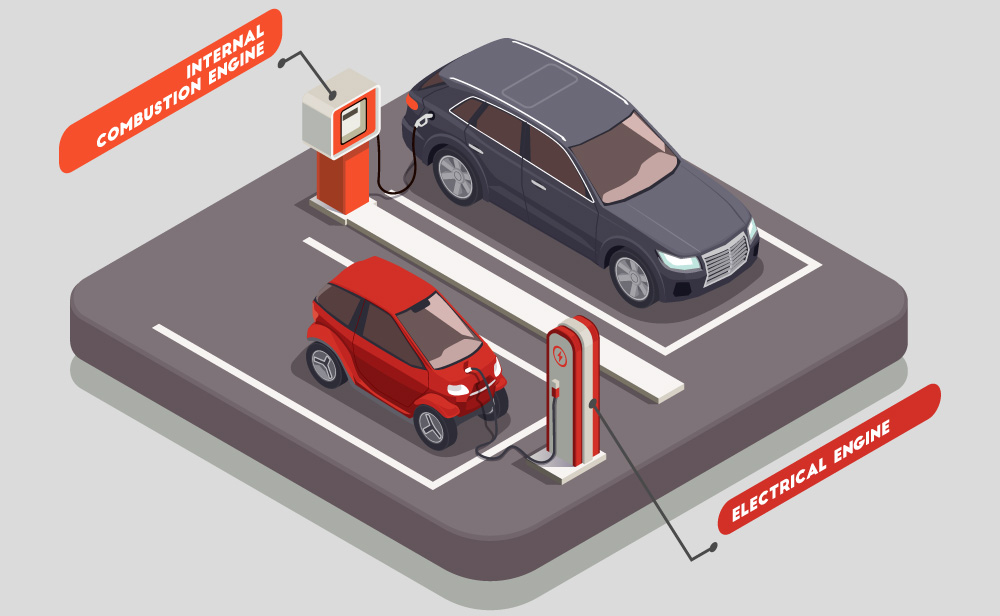An electric vehicle is a vehicle that uses one or more electric motors that supports driving of the wheels. For easier understanding, it is better to think about traditional ICE(Internal Combustion Engine) Vehicle, as both are analogous to one another.
In ICEV, petroleum goes about as fuel (driving source) though in EV, charge (from a battery) goes about as a driving source. ICE vehicle has engine and gearbox while EV has electric motors in the power-train section.
Most EVs, when fully charged have ranges of 80 to 100 miles, while a few luxury models have ranges up to 250 miles. When the battery is depleted, it can take from 30 minutes (with fast charging) up to nearly a full day (with Level 1 charging) to recharge it, depending on the type of charger and battery.
EVs are crudely described as batteries on wheels, and the key determinants of their commercial success are the total cost of ownership and the range that can be obtained for a single charge.
Also, these electric vehicles (mainly hybrid electric vehicles) can also recharge their batteries through a process known as regenerative braking, which recovers some of the energy of the electric motor that gets converted to heat by the brakes during slowing down of the vehicle.
The following are the components of Electric Vehicles:-
1. Traction Battery Pack & Auxiliary Battery: Traction battery pack provides electric power to Traction Motor & Auxiliary Battery provides power to vehicle accessories.
2. Charge port: To connect to an external power supply in order to charge the battery pack.
3. DC/DC converter: To convert higher-voltage DC power from the traction battery pack to the lower-voltage DC power needed to run vehicle accessories and recharge the auxiliary battery.
4. Electric traction motor: To drive the vehicle’s wheels. Some vehicles use motor generators that perform both the drive and regeneration functions.
5. Onboard charger: Converts AC electricity supplied via the charge port into DC power.
6. Power electronics controller: To manage the flow of electrical energy delivered by the traction battery, controlling the speed of the traction motor and the torque it produces.
7. Thermal system (cooling): To maintain a proper operating temperature range of the engine, electric motor, power electronics, and other components.
8. Transmission (electric): To transfer mechanical power from the electric traction motor to drive the wheels.



Leave A Comment